Intel Xeon Gold 5120 Benchmarks
For this exercise, we are using our legacy Linux-Bench scripts which help us see cross-platform “least common denominator” results we have been using for years as well as several results from our updated Linux-Bench2 scripts. At this point, our benchmarking sessions take days to run and we are generating well over a thousand data points. We are also running workloads for software companies that want to see how their software works on the latest hardware. As a result, this is a small sample of the data we are collecting and can share publicly. Our position is always that we are happy to provide some free data but we also have services to let companies run their own workloads in our lab, such as with our DemoEval service. What we do provide is an extremely controlled environment where we know every step is exactly the same and each run is done in a real-world data center, not a test bench.
We also wanted to note that our dataset is focused on pre-Spectre and Meltdown results at this point. Starting with our Ubuntu 18.04 generation of results we will have comparison points to the new reality. The Spectre and Meltdown patches to hurt Intel’s performance in many tests. At the same time, as of writing this article, patches are still being worked on. Likewise, software is being tuned to deal with the impacts of the patches. Given this, we are going to give the ecosystem some time to settle before publishing new numbers.
Python Linux 4.4.2 Kernel Compile Benchmark
This is one of the most requested benchmarks for STH over the past few years. The task was simple, we have a standard configuration file, the Linux 4.4.2 kernel from kernel.org, and make the standard auto-generated configuration utilizing every thread in the system. We are expressing results in terms of compiles per hour to make the results easier to read.
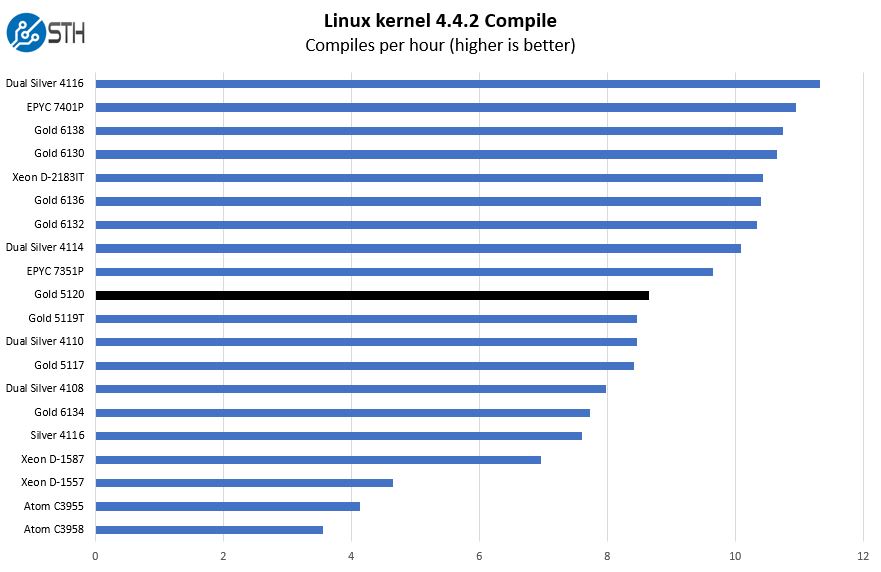
We added many different configurations to this list. We wanted to show the Intel Xeon Gold 5100 and Gold 6100 differences. We wanted to show what it means moving to Intel Xeon Silver single and dual configurations. We also wanted to show competition from the AMD EPYC side. In this chart, the Intel Xeon Gold 5120 falls directly in the middle of the pack.
c-ray 1.1 Performance
We have been using c-ray for our performance testing for years now. It is a ray tracing benchmark that is extremely popular to show differences in processors under multi-threaded workloads. We are using our new Linux-Bench2 8K render to show differences.
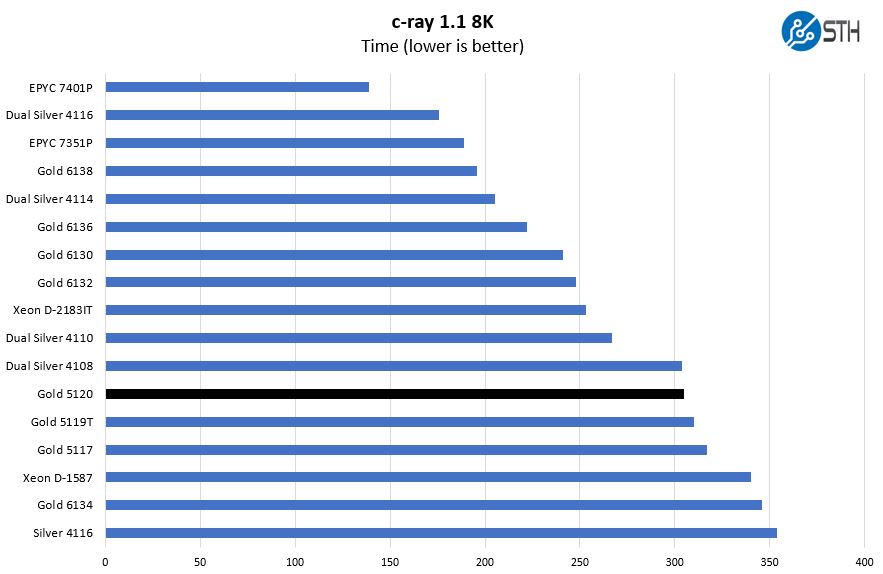
Here the single CPU Intel Xeon Gold 5120 nears the Intel Xeon Silver 4108 dual CPU configuration in terms of performance. This is where in the Intel Xeon Gold 5100 range that we start to see a single socket Intel offering match the lower-end Xeon Silver dual socket offerings. We are excluding the Intel Xeon Bronze 3106 here because if you are using Intel Xeon Bronze, CPU performance is not a primary objective.
This is an example of where the AMD architecture is strong. You will see this type of benchmark, including Cinebench, used heavily in AMD marketing materials because of how well the workload stays in CPU cache.
7-zip Compression Performance
7-zip is a widely used compression/ decompression program that works cross-platform. We started using the program during our early days with Windows testing. It is now part of Linux-Bench.
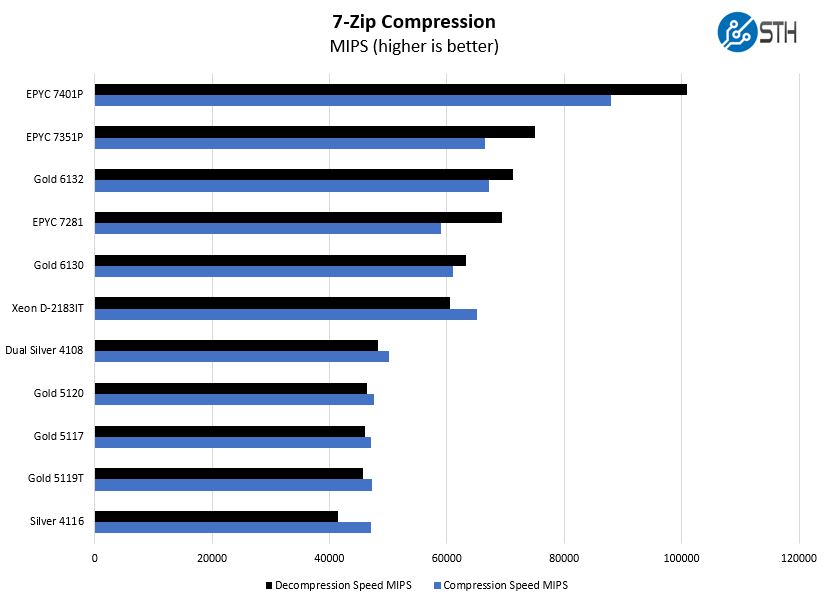
In the single socket arena, we added some of the embedded parts to our charts. As you can see, the high-end embedded parts like the 16-core Intel Xeon D-2183IT far outpace the Xeon Gold 5120 since they now have more cores.
NAMD Performance
NAMD is a molecular modeling benchmark developed by the Theoretical and Computational Biophysics Group in the Beckman Institute for Advanced Science and Technology at the University of Illinois at Urbana-Champaign. More information on the benchmark can be found here. We are going to augment this with GROMACS in the next-generation Linux-Bench in the near future. With GROMACS we have been working hard to support Intel’s Skylake AVX-512 and AVX2 supporting AMD Zen architecture. Here are the comparison results for the legacy data set:
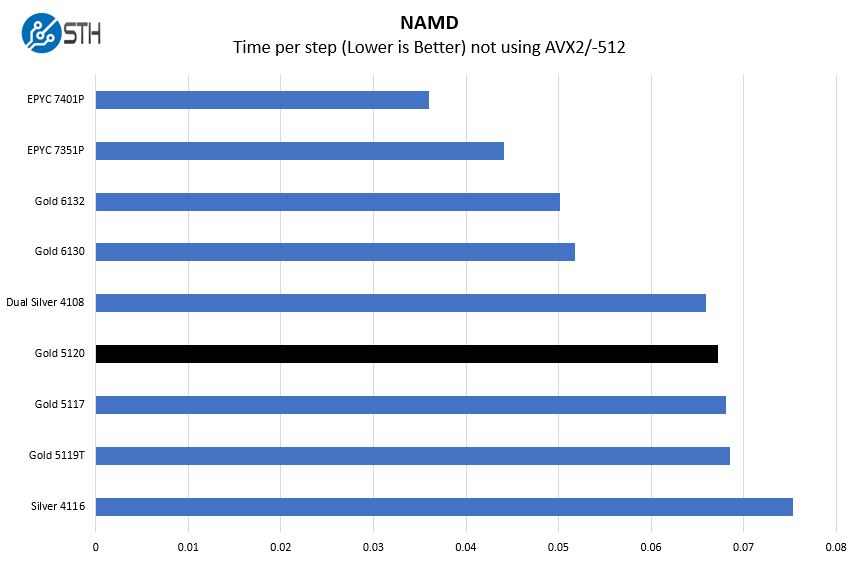
At this point, it is time to start looking at the obvious comparison: Intel Xeon Gold 5120 versus Gold 5119T and Gold 5117. There is simply not that much differentiation in the different parts.
Sysbench CPU test
Sysbench is another one of those widely used Linux benchmarks. We specifically are using the CPU test, not the OLTP test that we use for some storage testing.
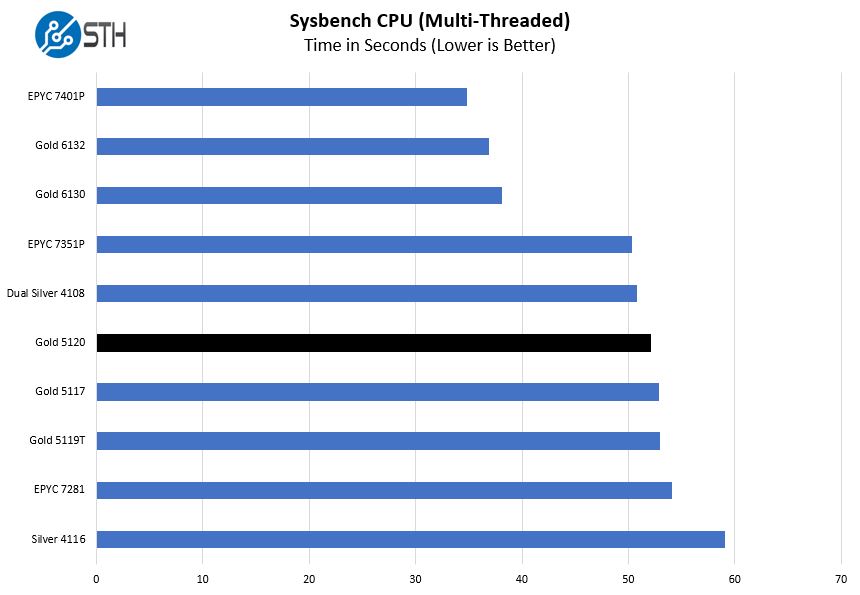
An interesting note here is that the lower-end 32MB L3 cache AMD EPYC 7281 cannot match the Intel Xeon Gold 5120 performance here, despite having 16 cores and more cache. Clock speed and architectures matter.
OpenSSL Performance
OpenSSL is widely used to secure communications between servers. This is an important protocol in many server stacks. We first look at our sign tests:
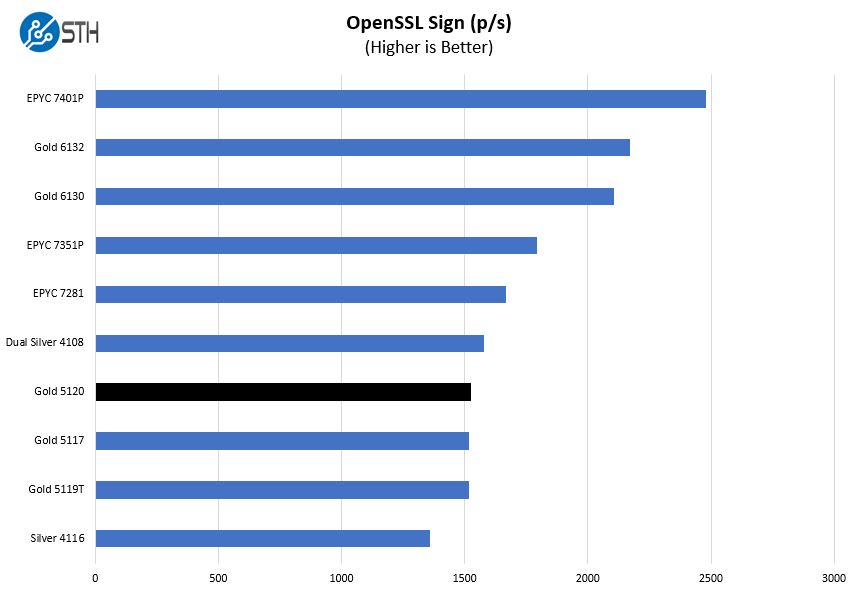
Here are the verify results:
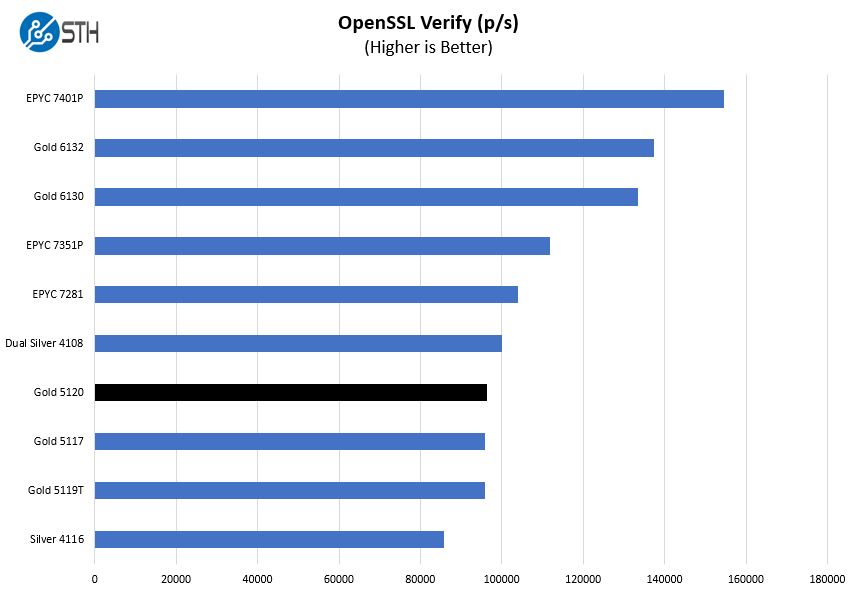
Most configurators offer the Xeon Gold 5120 as a minor price uplift over the Intel Xeon Gold 5117. You do see some minor performance improvements in performance across the board. That is consistent with clock speeds that are generally a few hundred MHz faster.
UnixBench Dhrystone 2 and Whetstone Benchmarks
Some of the longest-running tests at STH are the venerable UnixBench 5.1.3 Dhrystone 2 and Whetstone results. They are certainly aging, however, we constantly get requests for them, and many angry notes when we leave them out. UnixBench is widely used so we are including it in this data set. Here are the Dhrystone 2 results:
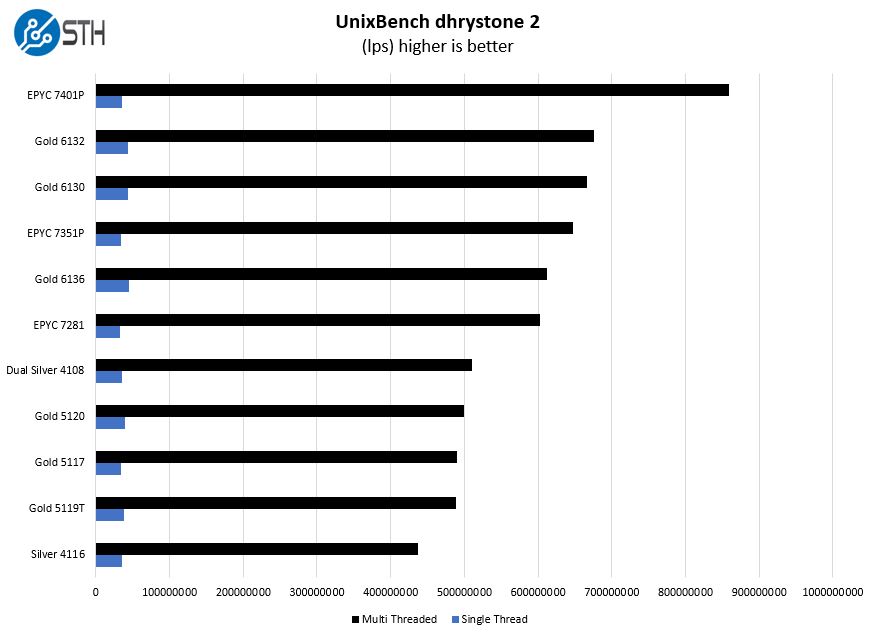
And the whetstone results:
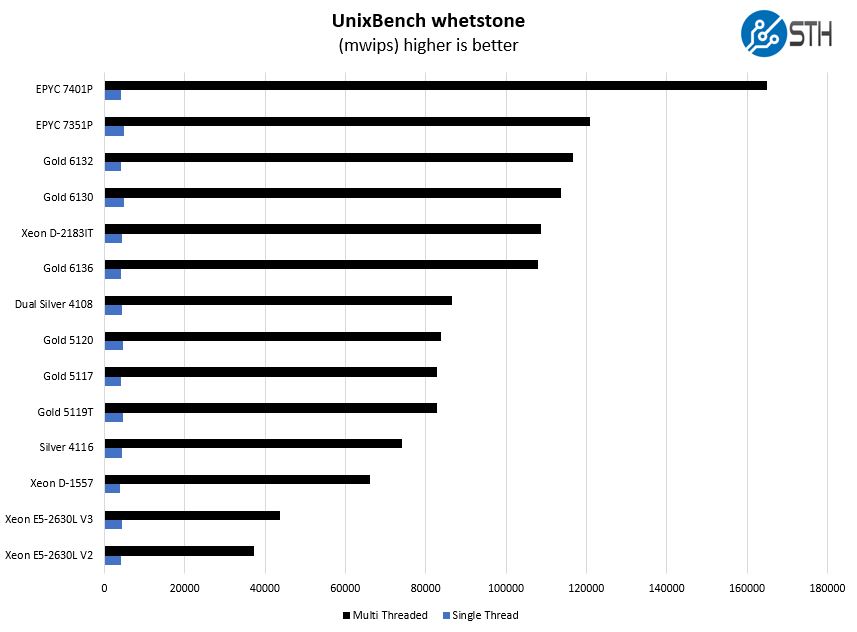
The Intel Xeon Gold 5120 is a number increment above the Intel Xeon Gold 5119T. At the same time, the performance delta is consistently more between the 5119T and the 5120 versus the 5117 and the 5120. Not only are the models closely grouped, but the numbers are non-linear in terms of performance with Intel Xeon Scalable.
GROMACS STH Small AVX2/ AVX-512 Enabled
We have a small GROMACS molecule simulation we previewed in the first AMD EPYC 7601 Linux benchmarks piece. In Linux-Bench2 we are using a “small” test for single and dual socket capable machines. Our medium test is more appropriate for higher-end dual and quad socket machines. Our GROMACS test will use the AVX-512 and AVX2 extensions if available.
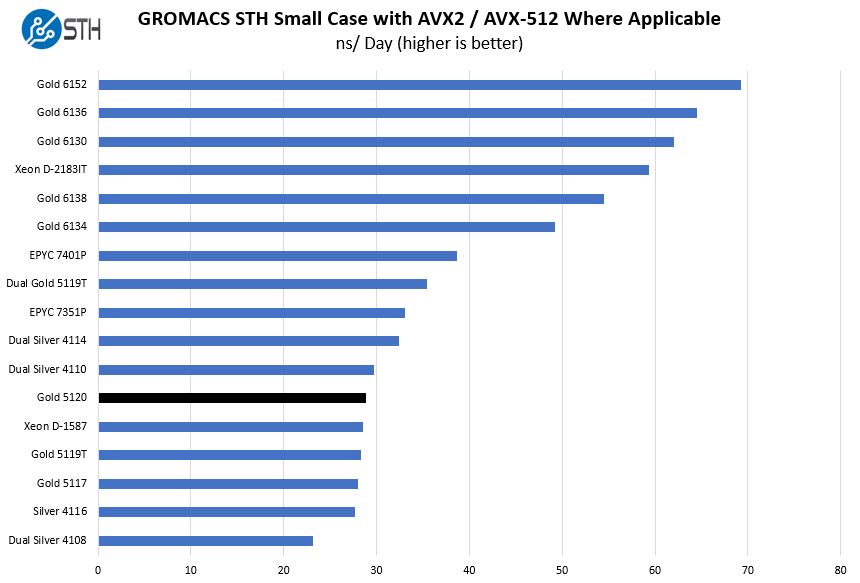
Without the dual port FMA AVX-512 we called the Intel Xeon Gold 5100 series “Xeon Pyrite” in our piece: How the Intel Xeon Platinum is a Marketing Headache. Here the AMD EPYC AVX2 is very competitive with the lower-end implementation of AVX-512. While the Intel Xeon Gold 5120 can check the code compatibility box for AVX-512, it is not fast with this generation.
Chess Benchmarking
Chess is an interesting use case since it has almost unlimited complexity. Over the years, we have received a number of requests to bring back chess benchmarking. We have been profiling systems and are ready to start sharing results:
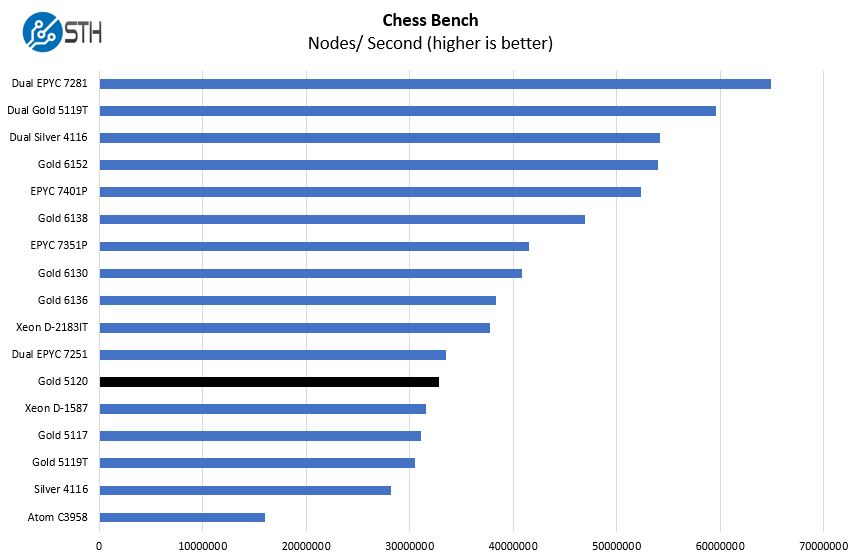
Here the 14 core Intel Xeon Gold 5120 is faster than dual 8 core AMD EPYC 7251 chips. It is also faster than the 16 core Intel Xeon D-1587 embedded part.
Next, we are going to look at the power consumption of the chip. We are going to follow that with a discussion of the chip in relation to other chips in the market. We will end with our final thoughts on the chips.




What is this “Project Xavier” CPU benchmarking project, i really want to know more, how does one access this data? Is this a paid service you are offering?
Project Xavier is our project to benchmark every AMD EPYC and Intel Xeon Scalable CPU we can get our hands on. In addition to our workloads, a portion of which is used for this benchmark series, we have been running workloads for our clients. The goal has been to get people real performance data about their workloads across a large number of CPUs.
Thanks, and how does my company become a client for this service? I can’t find any mention to this service on the site.